User Tools
Sidebar
This is an old revision of the document!
Prerequisites for CIDER 2018 Tutorial
VirtualBox
You can download and install VirtualBox *before* the tutorial or use the installation files that are on the USB drives that will be distributed at the beginning of the tutorial. You can download the software from VirtualBox downloads.
Use these directions to install VirtualBox.
If your host machine is any linux system, both virtualbox and virtualbox-dkms packages must be installed. Also check to make sure you have exFAT filesystem drivers. Windows and Mac systems should have it by default. On Ubuntu, the packages required are exfat-utils and exfat-fuse.
We recommended that your computer has at least 20 to 30 GB of free disk space and preferably 4 GB of RAM.
Tutorial Image
During registration, you will receive a 16 GB USB drive with an OVA file called “CIDER2018.ova” and the installation files for VirtualBox. This image contains the software for all CIDER tutorials. Copy it onto the laptop you are going to use for the tutorial.
Alternatively, you can also download the virtual machine frome here: CIDER2018 Virtual Machine. Note that this file is over 5GB in size and will take a long time to download (it is not recommended to do this during the tutorial as the Wifi will be unable to provide sufficient speed for multiple simultaneous downloads).
Importing the CIDER2018 tutorial virtual machine
- Run VirtualBox.
- Select from the menu “Import appliance”:
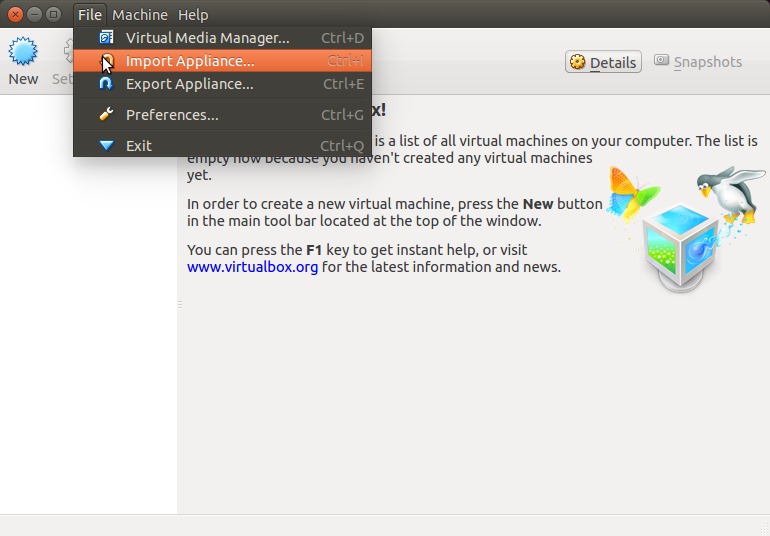
- Select the copied/downloaded CIDER2018.ova:
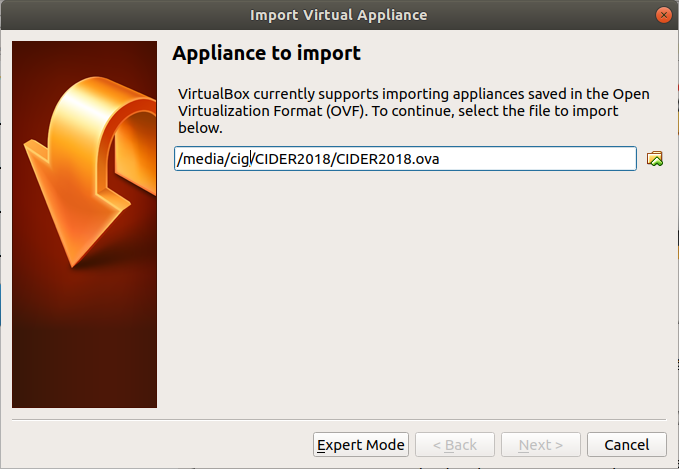
- Select Next and Import:
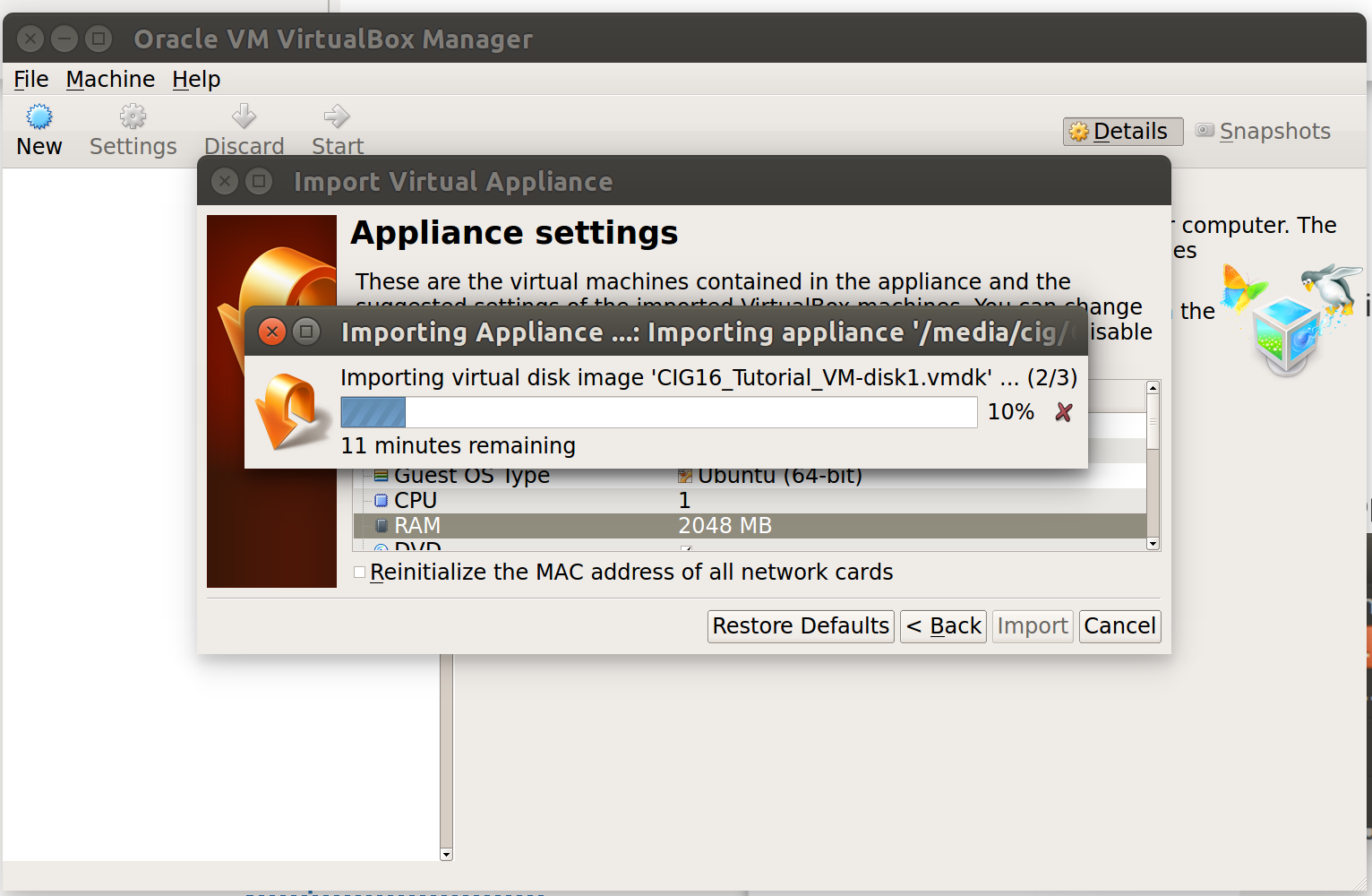
- Click on start (the green arrow) to launch the image:
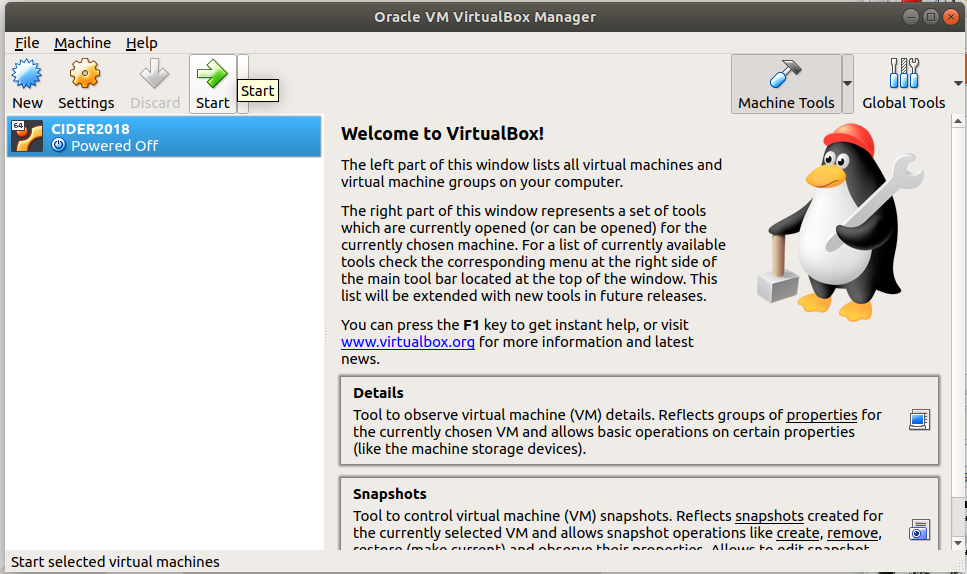
- You know it worked if you see the following login screen:
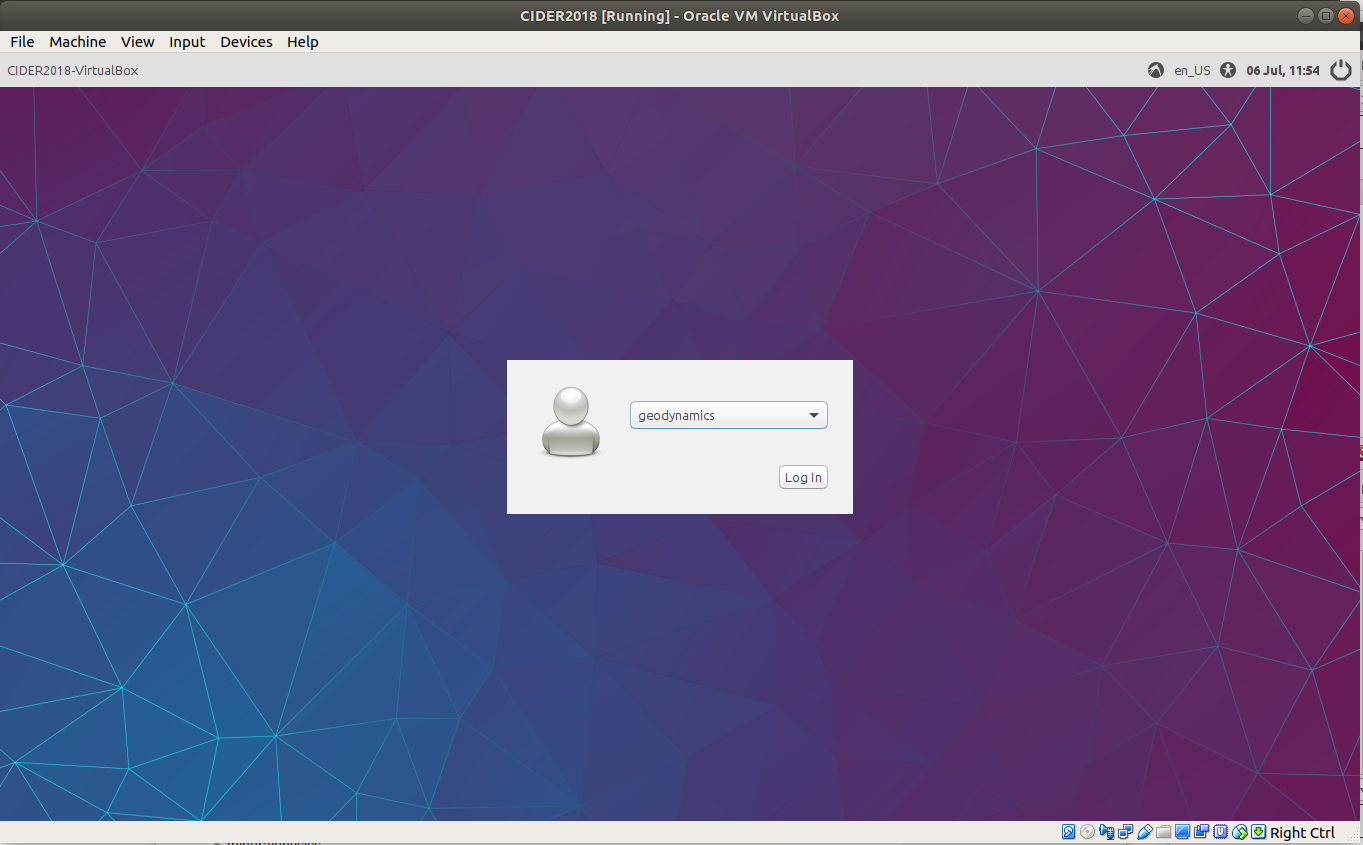
Using the virtual machine
We use VirtualBox to run a separate ('guest') operating system inside your normal (or 'host') operating system. For this tutorial we use a Lubuntu 16.04 linux inside the virtual machine, because it provides a reasonably intuitive interface, and importantly is relatively lightweight, keeping the size small, and the machine relatively fast.
The virtual machine contains the following users for the individual tutorials:
- geodynamics
- mineralphysics
- seismology
As a first step select any of the above users and login to the system. Note that all of the users listed above are password less. Lubuntu separates the common 'Start' menu in the bottom left corner of the screen from the 'Shutdown/Reboot/Switch user' menu in the bottom right corner of the screen, but otherwise the layout of file explorer and menus should be vaguely familiar to all users of 'Windows'/'MacOS'/'generic Linux' users.
The majority of the work in the tutorials will happen in the linux terminal, and if you are not used to working in the terminal, now is a good time to familiarize yourself with some basic commands:
- You can open a new terminal by pressing
ctrl+alt+t, or double-clicking on theLXTerminalshortcut on the desktop - You can exit the terminal by typing
exitand pressing enter - You can change directories in the terminal using the command
cdfollowed by the directory name (orcd ..to move up one directory). Just typingcdand pressing enter brings you back to your home directory. Most tutorials will happen in the directory 'Desktop' and some subdirectory of it. - You can always press
Tabonce or twice and the terminal will try to auto-complete the command you were typing (very useful for long or unknown filenames!) - You can list all files in the current directory using the command
ls - You can start programs by typing their name and pressing enter (try
leafpadfor a simple text editor) - While a program that you started from the terminal is running, you can type more commands in the terminal, but they will only be executed when you close the program.
- You can always open additional terminals to work in other directories while keeping the old one open.
The virtual machine has all required software installed, but if you are familiar with linux and you want to install additional packages (e.g. your favorite text editor), do it as cideradmin, using the password cideradmin:
su cideradmin
sudo apt-get install <package name> to install ubuntu packages.
Now simply start the CIDER2018 virtual machine and log into the user required for your current tutorial.
Troubleshooting
- On some laptops the hardware feature that allows virtual machines to work efficiently (Intel VT-x) is disabled. If while importing or starting the VM you get error messages like 'This host supports Intel VT-x, but Intel VT-x is disabled' then reboot your computer, enter the BIOS settings, and make sure the 'VT-x' setting is set to 'Enabled'. As the setting can be called slightly differently for different laptops, please let us know if you need help with this problem.

